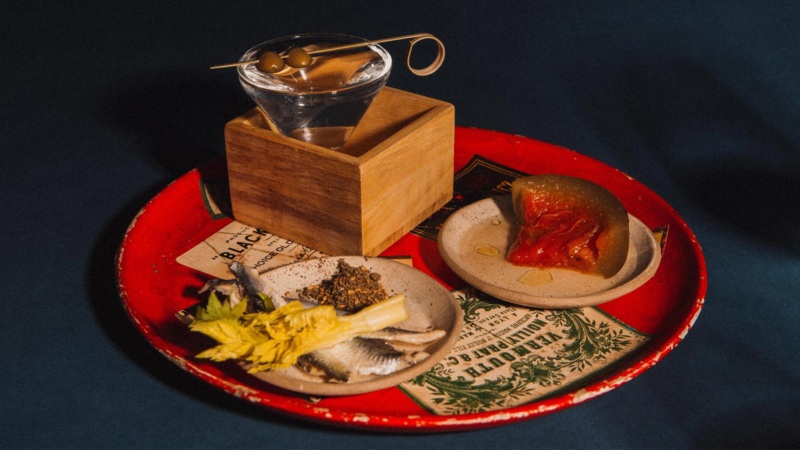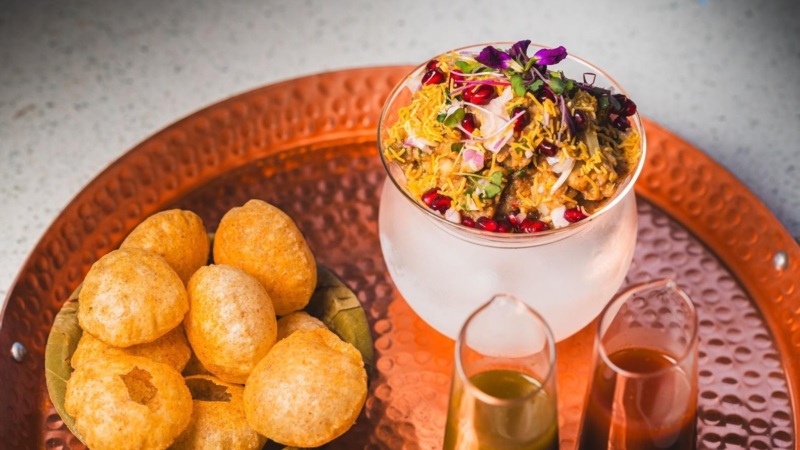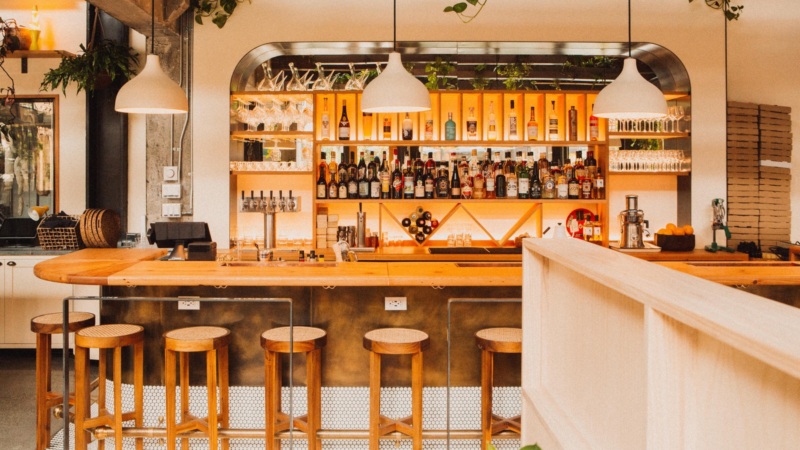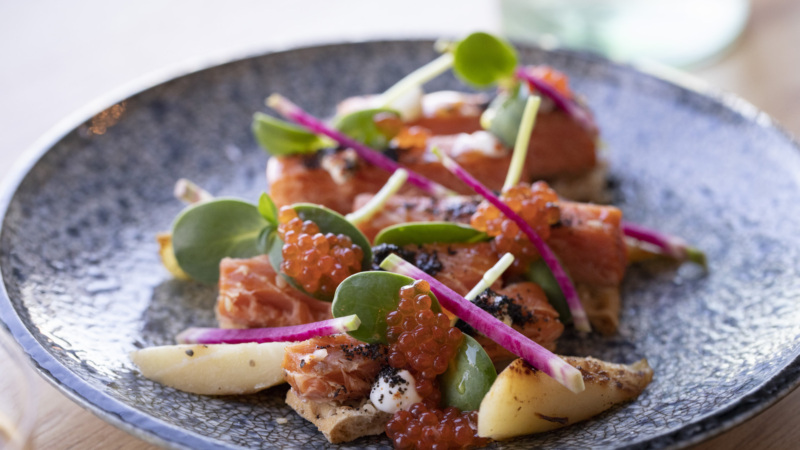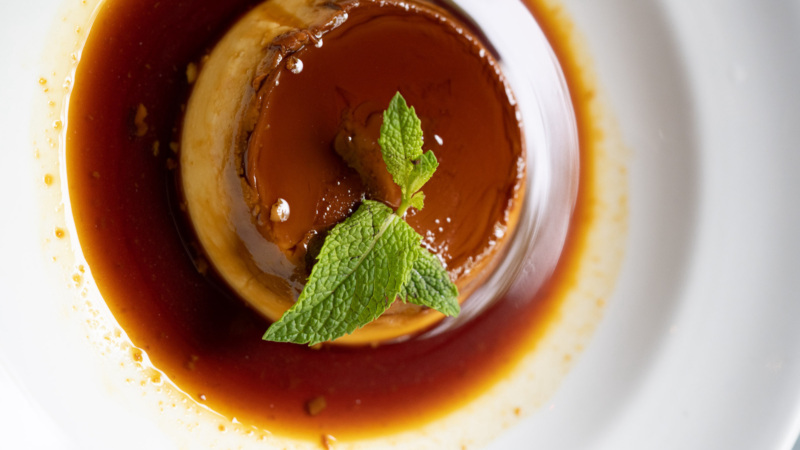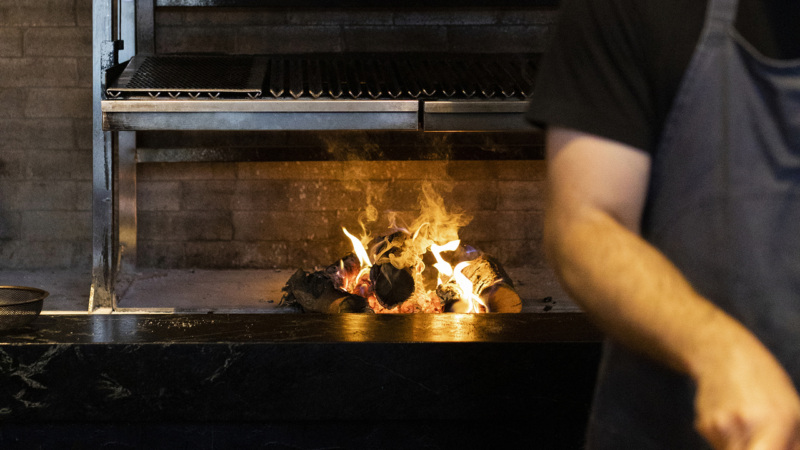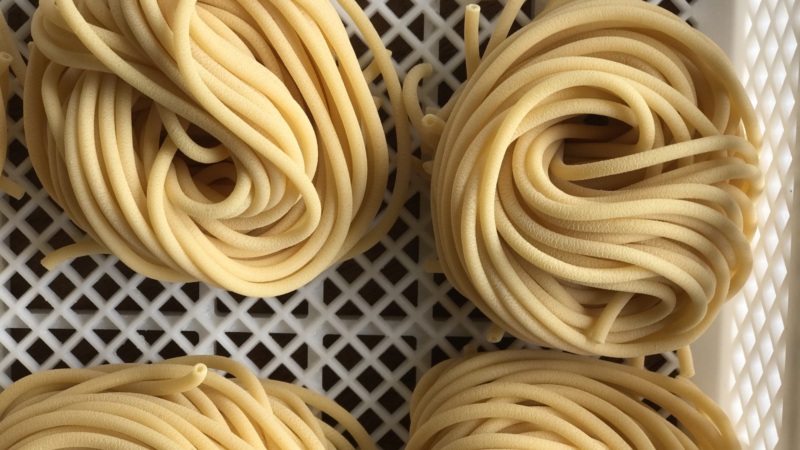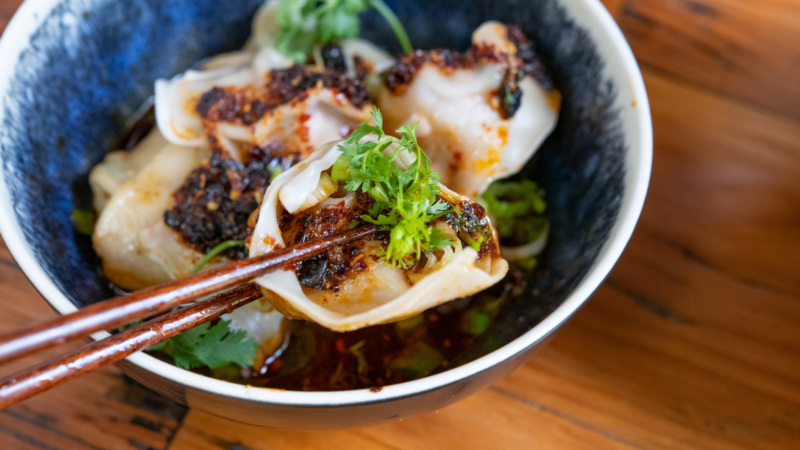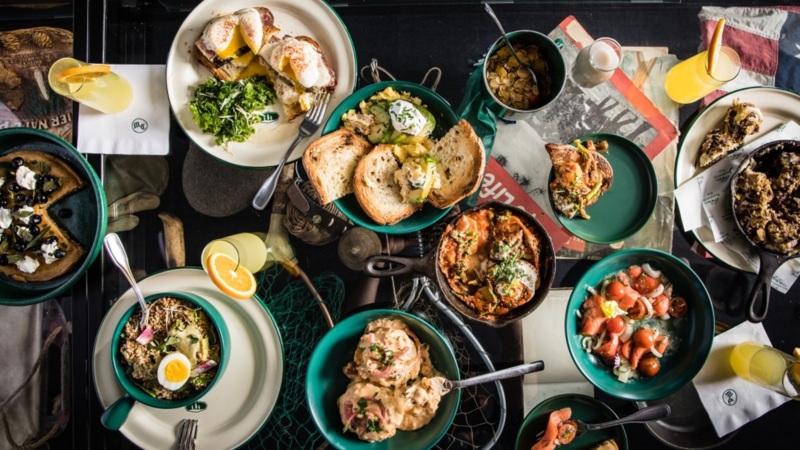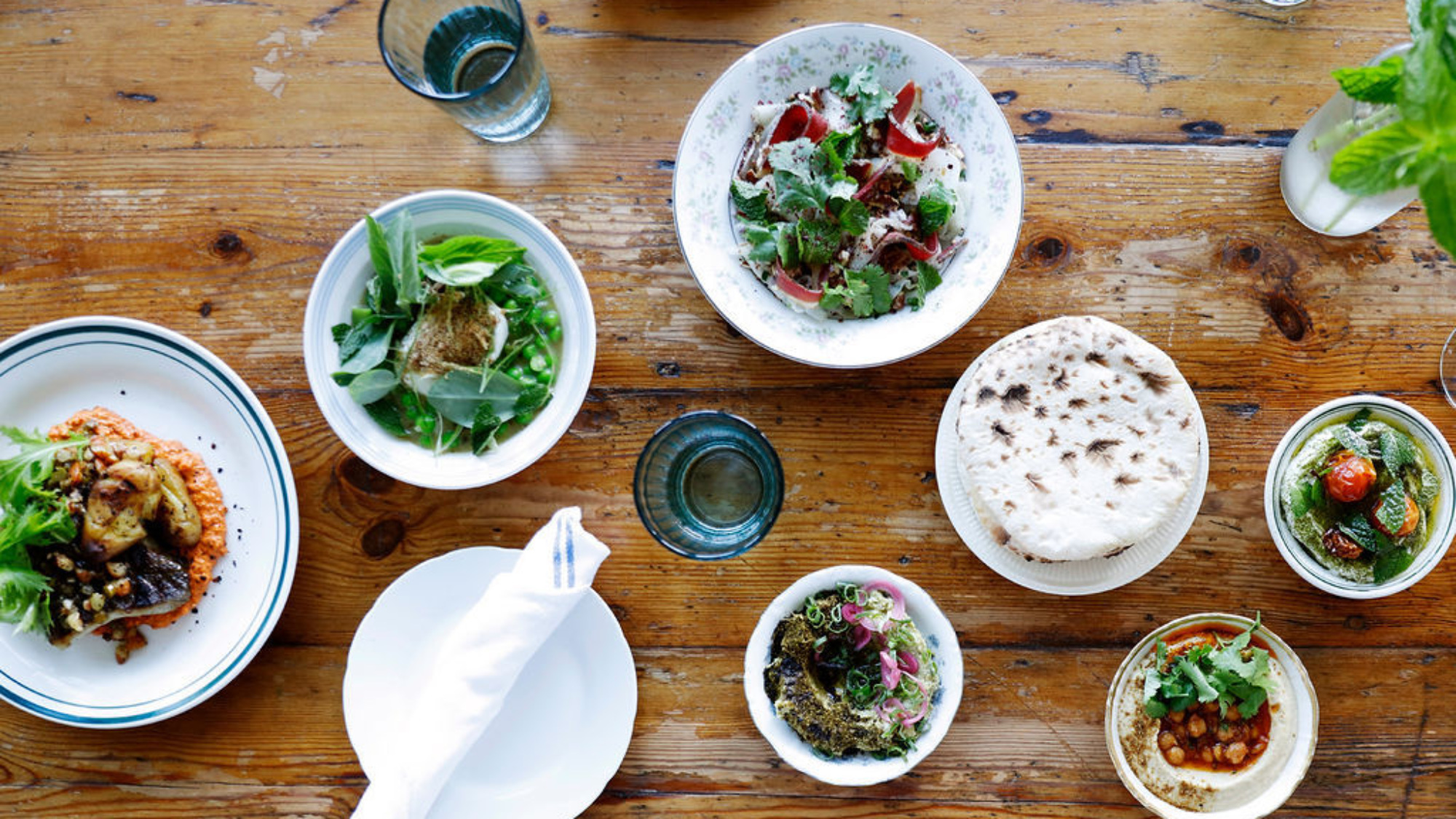
How Homer Brings Home Flavors From Afar, As Seen Through Five Dishes
Since opening in 2018, has developed a reputation as the kind of restaurant every diner wishes they had just down the street. The draw: craveable, shareable dishes best eaten with your hands; a cozy dining room always abuzz; cocktails perfect for a nightcap; and soft serve ice cream served through a window out front for when you just want a sweet treat.
It’s exactly the kind of place owners Logan Cox and Sara Knowles envisioned when they opened the Beacon Hill spot just a few blocks from their own home.
As designer, Knowles made sure the restaurant walks the line between chic and whimsical. And as chef, Cox built the menu around the Middle Eastern and Mediterranean flavors he’s long been drawn to, cooking plants and proteins alike in the wood-fired oven that holds court in the back corner of the open kitchen. In fact, Cox says the temperature of the oven informs the cadence of the day — pans of chickpeas go in when it’s hottest to get properly obliterated for the creamiest hummus; chicken roasts as it cools; pita is baked to a glorious puff for 30 seconds or so before it hits the table.
It’s a dance Cox and his team haven’t had to do publicly for awhile, but after well over a year of takeout — something they managed better than most, due to the fact that Homer’s food is still so tasty at room temperature — they’re back to welcoming (vaccinated) diners back into the restaurant and not just the charming patio in the alley next door.
“[It’s been surreal] setting up the dining room again, but this is what we love doing,” Cox says. “That first day was very weird, obviously, but you realize why we do this. The joy of cooking for people and serving them, having that sort of energy back in the dining room, putting food on plates. It’s been so great.”
Much has evolved over these past months (better outdoor seating! to-go cocktails!), but Homer’s menu, as always, is influenced more by the seasons than by supply issues, thanks in large part, Cox says, to the fact that so much of it is plant-based.
We talked with Cox and Knowles to hear the stories behind a few of their most-beloved menu items, both new additions and fan favorites they say won’t ever come off the menu.
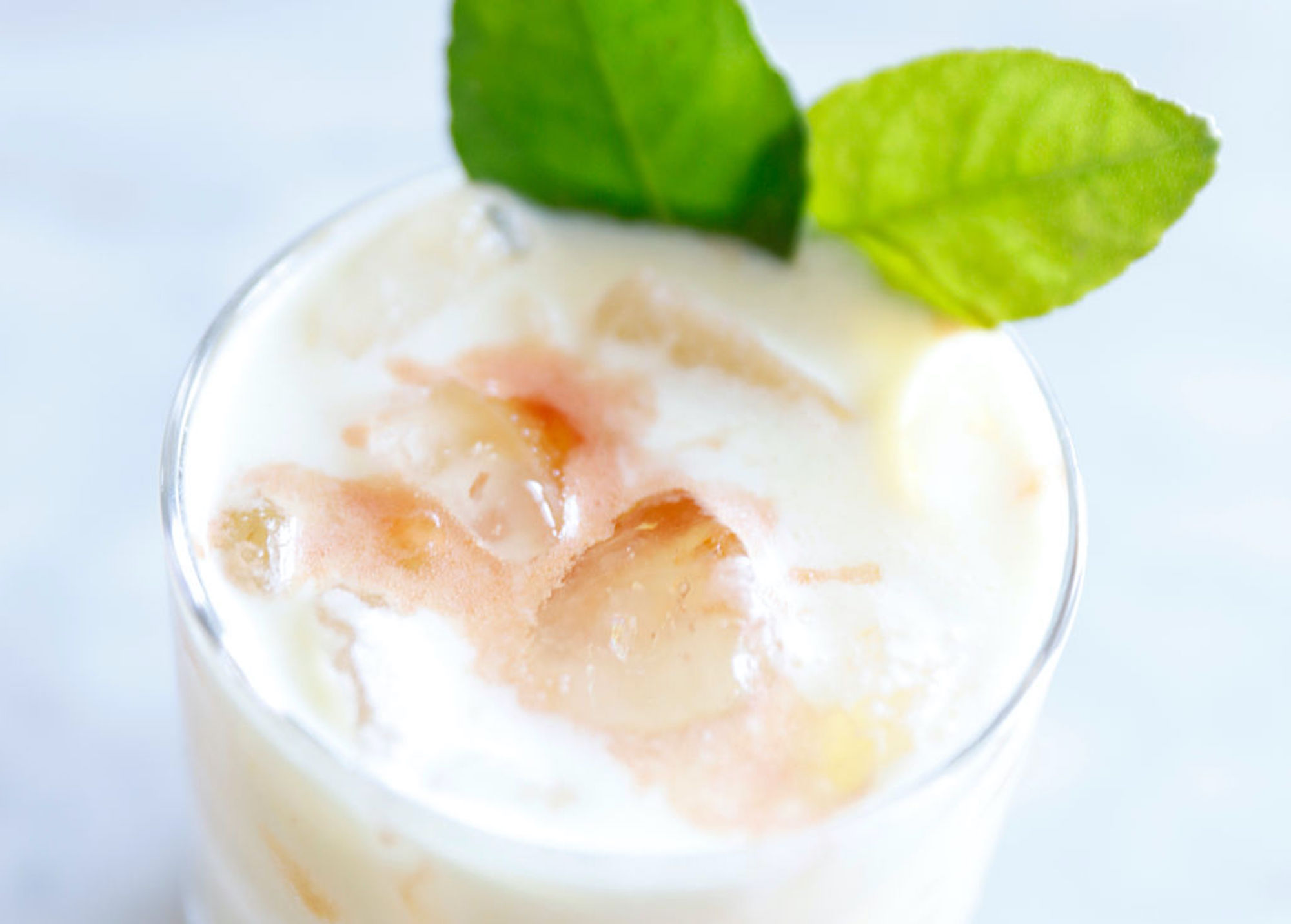
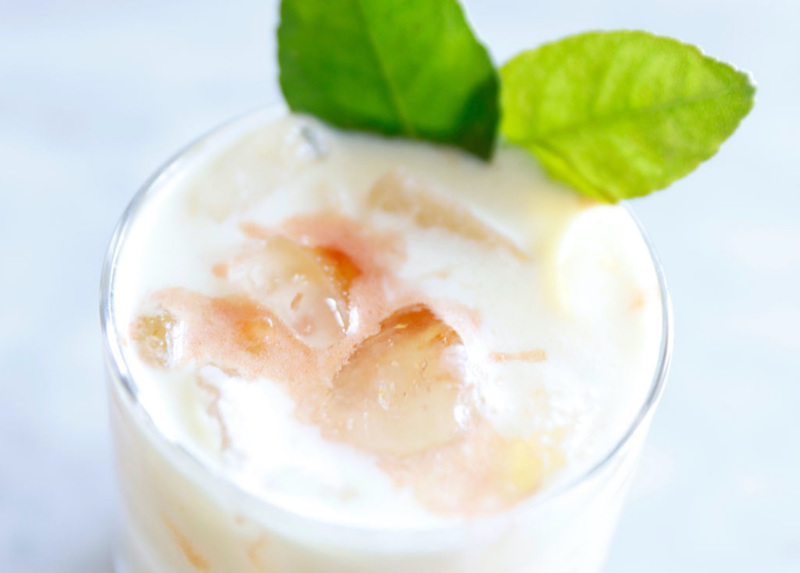
1. Kuri Coco Cocktail
Knowles: “I picked this because it’s my favorite, and I like that it really does use something from the menu.”
Cox: “So, there’s squash bisque and coconut syrup [plus Angostura bitters and aged rum] used in the cocktail, so it’s this funky play on ‘we use local produce!’ but with a fun tiki vibe. It’s also garnished with a lime leaf, so it has a kind of curry feel to it.”
Knowles: “It does have that more playful edge, and it complements the food really well. In light of reopening, anything we could do to invest and imbue this place with a sense of excitement — whether that was new dishes or having a brand-new cocktail program [consulted on by bartender Zac Overman of L’Oursin] — felt good, just to be doing things other than ordering more takeout containers.”
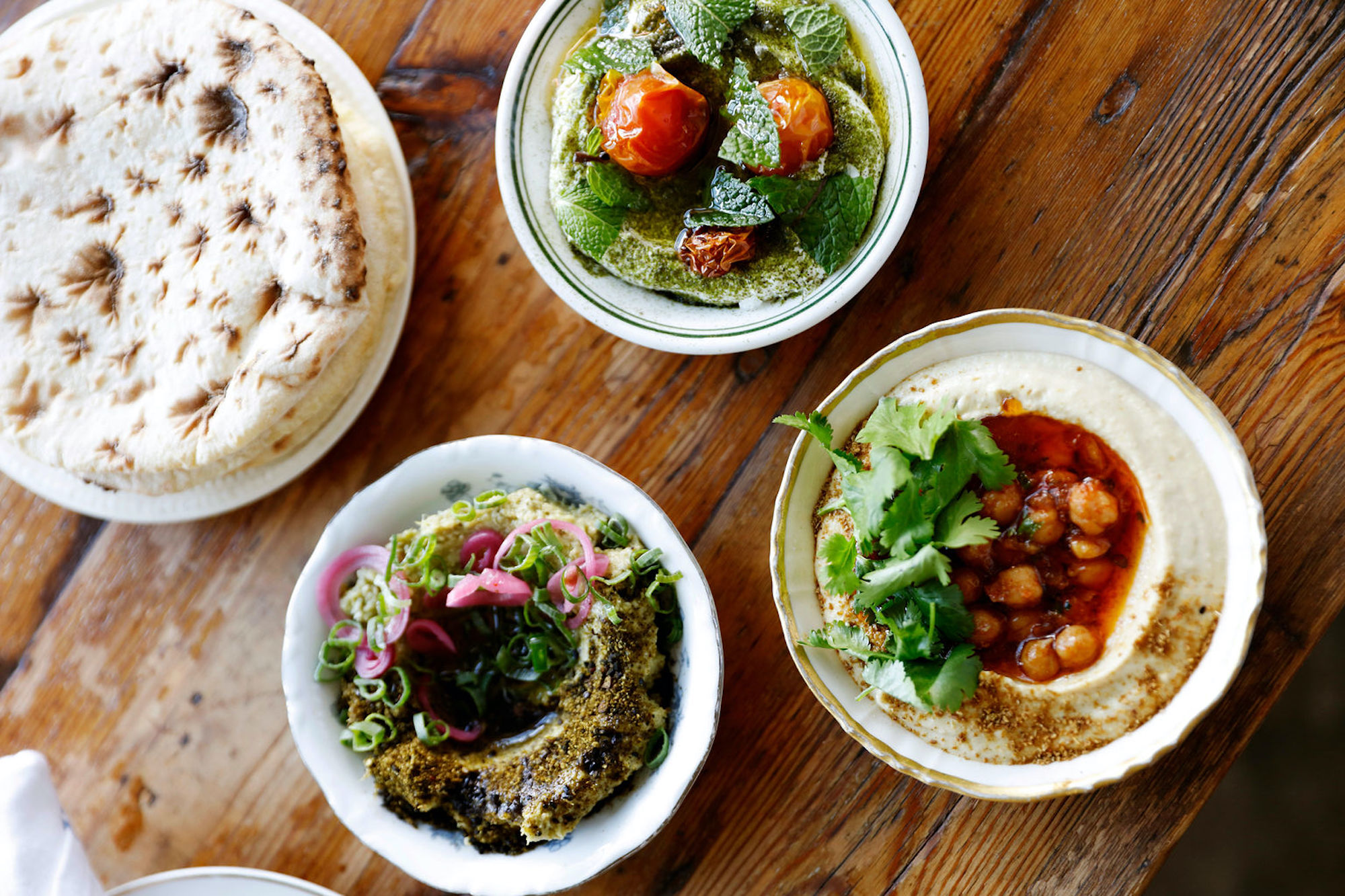
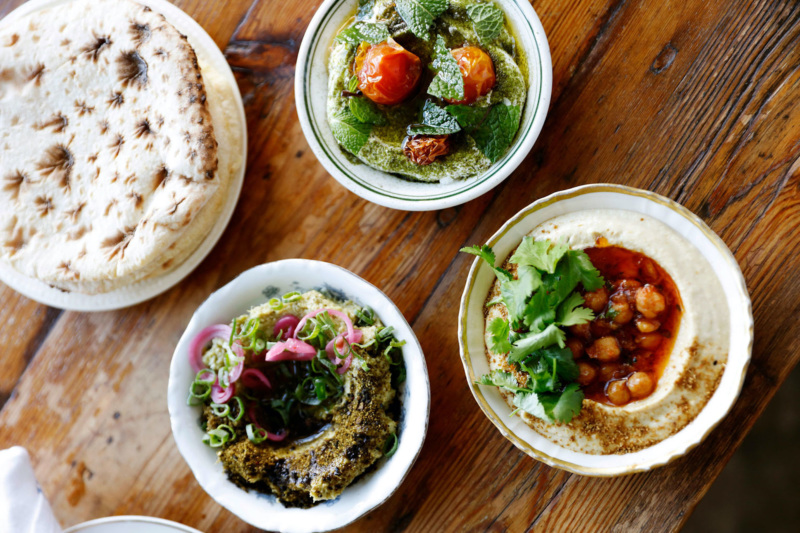
2. Pita and Various Dips
Cox: “I’ve always been obsessed with this Mediterranean/Middle Eastern style of eating, the flavor profiles, how it’s very jovial, familiar, and people are eating with their hands. I think pita was my one focus when I wrote the original business plan. I was like, I want dips, and I want pita. But the way I nailed down the recipe specifically is that Sara and I and her entire family and their partners went to Morocco for two weeks. We spent one week hiking in the Atlas Mountains and a week in Marrakech. The bread there isn’t quite like pita, it’s spongier, and it’s primarily made with semolina, which I’d never seen before. So, I utilized that by having a portion of semolina in the actual dough, which makes it also a little chewier, but you still have the puff effect of a traditional pita dough. It’s kind of a blend of both.
“The dips do change — we always have the labneh with dried tomatoes and mint and the hummus because those are the ones I think you’d expect, and then we have something seasonal we change every six weeks or so. Like zucchini and cashew with raw garlic and lots of basil. Really, really tasty.”
Knowles: “I think our goal throughout is to have the perfect amount of things you know you’re going to get, and then some exciting new stuff. I feel like the dips and bread are just Homer in a nutshell.”
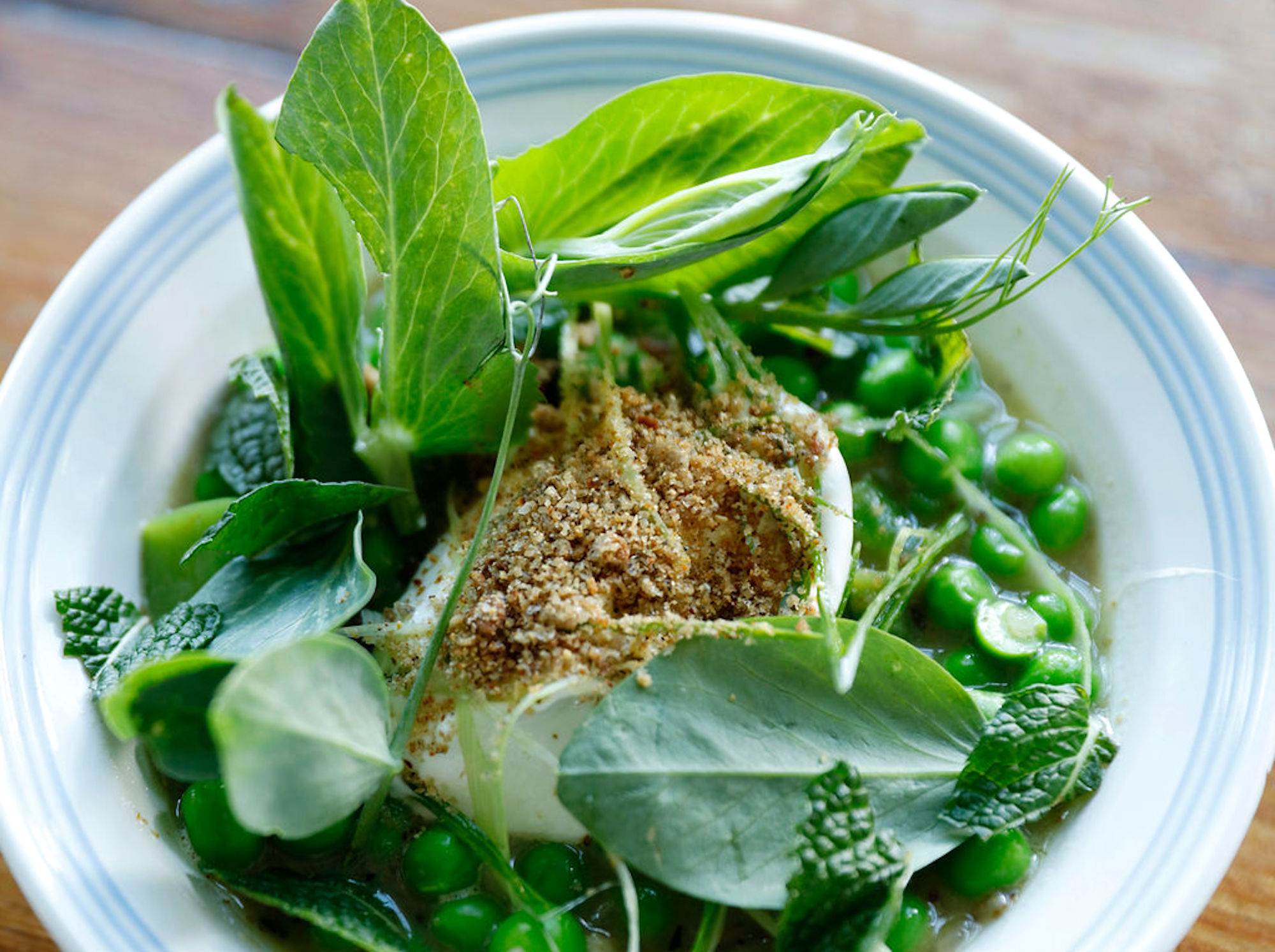
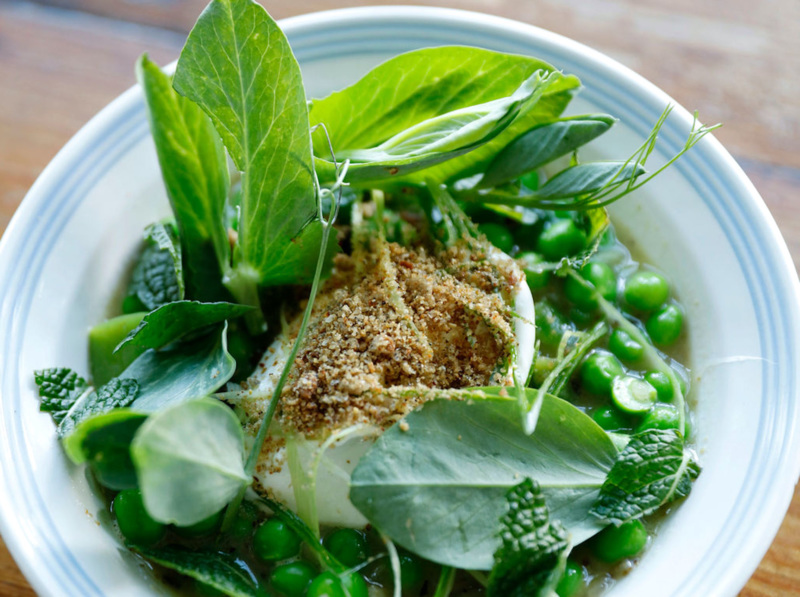
3. Pea Shoots and Whey With Labneh and Chamomile
Cox: “This is one of my favorites, and I actually made this dish when I worked at Sitka & Spruce. I loved it so much that I was like, ‘This will be on the menu every spring at whatever restaurant I’m cooking at.’ It’s basically English peas that we serve with labneh, chanterelle breadcrumbs, pea shoots and chamomile. We cook the peas in a broth made of whey. So, we’ll make the labneh, reserve the whey, reduce it with all the pea shells we shucked and lots of ginger and chamomile and garlic, reduce that down by 75% so it’s really intense, but still acidic and floral. And then we’ll gently warm the peas in that broth with some butter, add some pickled ramps so you get little acidic bites. A dollop of labneh on the side. And we make chanterelle breadcrumbs with dehydrated chanterelles and garlic and breadcrumbs, so you have this crunchy element off the side. Garnish with mint and pea shoots. When I first made it, I was like ‘Man, this is so delicious.’ It’ll come back every spring.”
Knowles: “Plus, it’s so bright and colorful, it’s spring personified.”

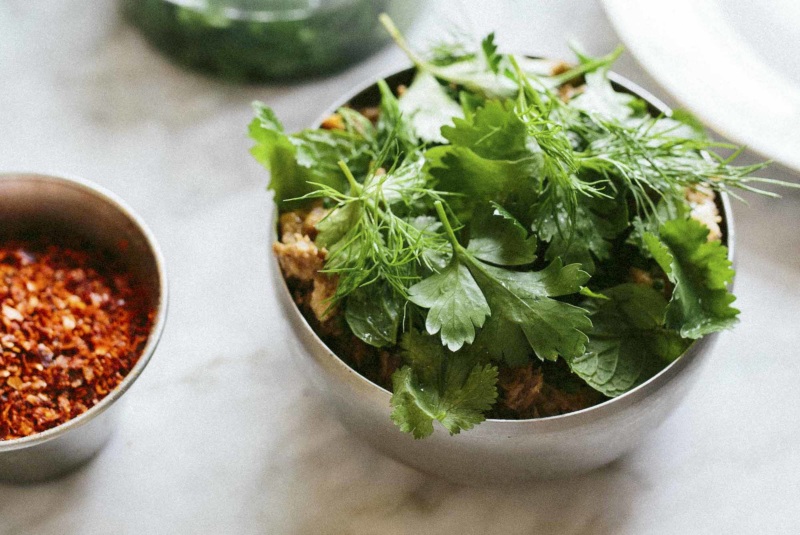
4. Lamb Ragu
Knowles: “This one is just…” *chef’s kiss*
Cox: “This dish is, I think, the reason why we were in GQ’s Best Restaurants in America, 2019. [The author] had that, and it’s the only thing he talked about when he’s describing our food.”
Knowles: “It is a special dish for sure. I know when I moonlight as a server here, I always tell people, ‘You gotta get that’! I don’t think it’s necessarily an obvious choice, because it’s not easily translatable to words. But if I had to pick one dish on this entire menu, it would be that one.”
Cox: “We also use whey for this, too. We take lamb shoulder and braise it in whey. We started doing that from day one. And we’ve reserved that whey over and over and over again, so it’s just super concentrated lambiness — kind of like how you cook master stock chicken, that classic dish. We incorporate that technique into lamb shoulder, so we just reuse it and strain it, reuse it and strain it. And then season with berbere, cinnamon, Aleppo chile, and fold in some yogurt to make it kind of creamy and reinforce that whey flavor that it’s been cooking in. It sits on our tahini, which is a recipe I’ve been working on for a long time, too.
“We use a multitude of different acidic elements to make it have a kind of miso quality, which I’m particularly proud of because I thought that was a creative approach, to have a different take on a more traditional tahini. So that umami flavor on the bottom, with the lamb and all that richness, and you dip in there, get the creamy, get the umami and the spice and everything. It’s just an awesome one-bite shot. Especially with all the bright, feathery herbs on top, too.”
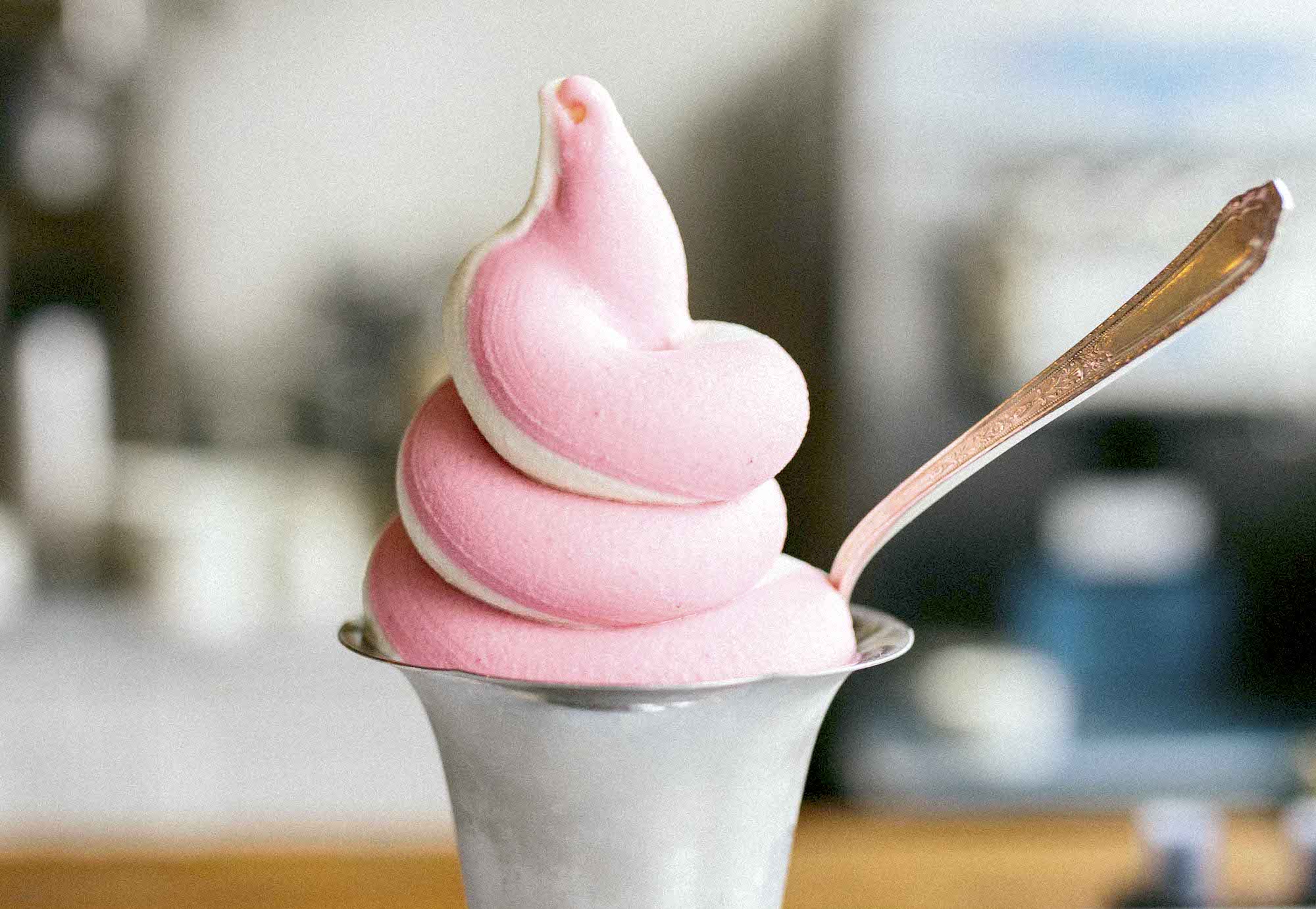
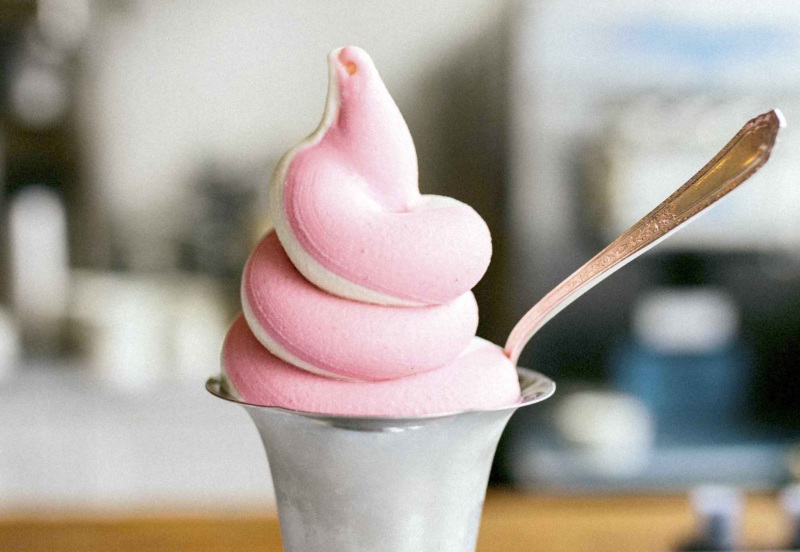
5. Soft Serve
Knowles: “The inspiration for the soft serve was that we wanted from day one to make this place approachable, to fit the neighborhood. And this was one way to make it feel more familial, casual, to be very mindful that there’s a little bit of something for everyone. We wanted to have a more playful versus a more structured dessert. It’s also a really fun way to use local, seasonal ingredients.”
Cox: “Everyone’s had vanilla and chocolate soft serve, but not many people have had preserved lemon, or blackberry chamomile. We change once a month or so. Our chef de cuisine Caroline [Pond] and I discuss what we’re going to do. I think we’ll do something with melon, anise hyssop or lemon balm soon.
“It’s also pretty enticing because people are like, ‘Yeah, soft serve…’ But these are housemade bases with really exciting flavors. It gives you a true carnival experience with a touch of finesse and je ne sais quoi. The machines are the biggest headache of my life, because now we have [second restaurant] Milk Drunk down the street. I feel like I’ve become a technician in the last few years. But knowing how to fix them yourself is pretty clutch.”
Knowles: “Soft serve was also our little segue here into doing the window, which — we didn’t predict this — but it ended up being a) really helpful during a pandemic, and b) an easy way for people on the patio to get cocktails. And people just really like getting things through a window, it’s cute. Just having those more quirky elements helped us not feel like we were putting fine dining into the neighborhood.”

